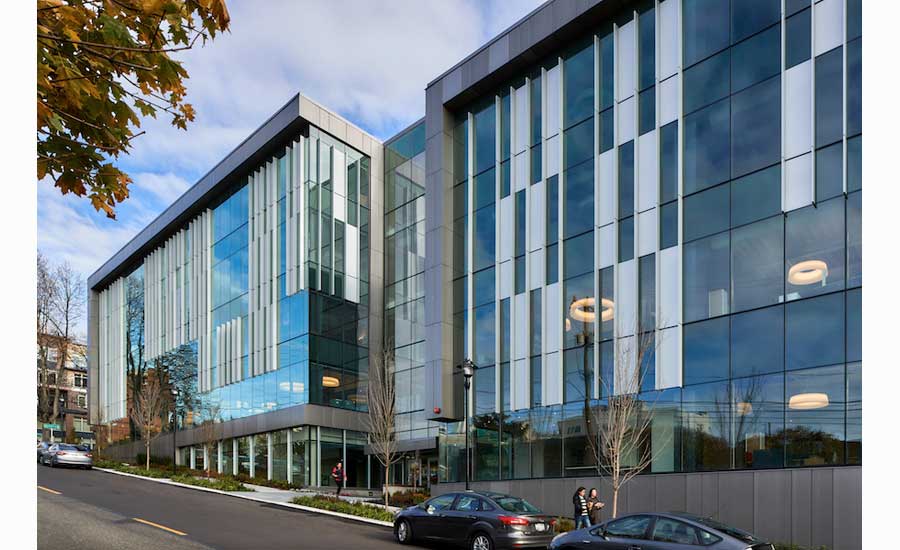When it comes to natural lighting, Seattle buildings need all the glass they can muster to bring the light indoors. But with Seattle’s stringent energy code, that can prove a difficult concept, says Ed Palushock, Perkins+Will senior project designer.
The Third & Harrison project, a new 185,000-sq-ft, five-floor office building that now houses Holland America Cruise Lines within the Lower Queen Anne neighborhood took on the glass challenge. “The half-block development is conceived as two glass pavilions lightly restong on the ground and linked by a central atrium,” Palushock says.
With each floor plate approximately one acre and rooftop terraces that include views of Elliott Bay and the Olympic Mountains, the bountiful views offered another reason to embrace glass as a material of choice. “The client wanted a substantial amount of glass for natural light and views,” Palushock says. “The challenge is that Seattle has some of the most stringent energy codes with prescriptive limitations on this material. We also were on a fast-track design and construction schedule. We had less than one year for design, plus another year for construction on a constrained, urban site.”
The plan, then, required a glazing system with an eye toward construction speed. Contractor Lease Crutcher Lewis brought on subcontractor Herzog Glass to work on the Wausau and Wall Systems design to fit both with architectural and energy desires within the tight timeframe.
“Basically, we did not want to notice the framing,” says Palushock. “We wanted to have it essentially disappear. It’s all about the view.”
With more than 30,000 sq ft of unitized curtainwall, assembled and glazed in the factory to speed on-site installation, the team created strategically placed exterior shading devices to reduce solar heat gain. Light-diffusing glass shipped from Germany and polyamide thermal barriers applied to the glass improves thermal performance while maintaining the structural and durability of the windows.
To add to the project’s sustainability goals, the aluminum used on the system contains a high recycled-content aluminum billet composition. Aluminum coating procedures included capturing the liquid paints’ volatile organic compounds content using a 100 percent air capture system and destroying the VOCs with a regenerative thermal oxidizer.
Follow Tim Newcomb on Twitter at @tdnewcomb.


Post a comment to this article
Report Abusive Comment